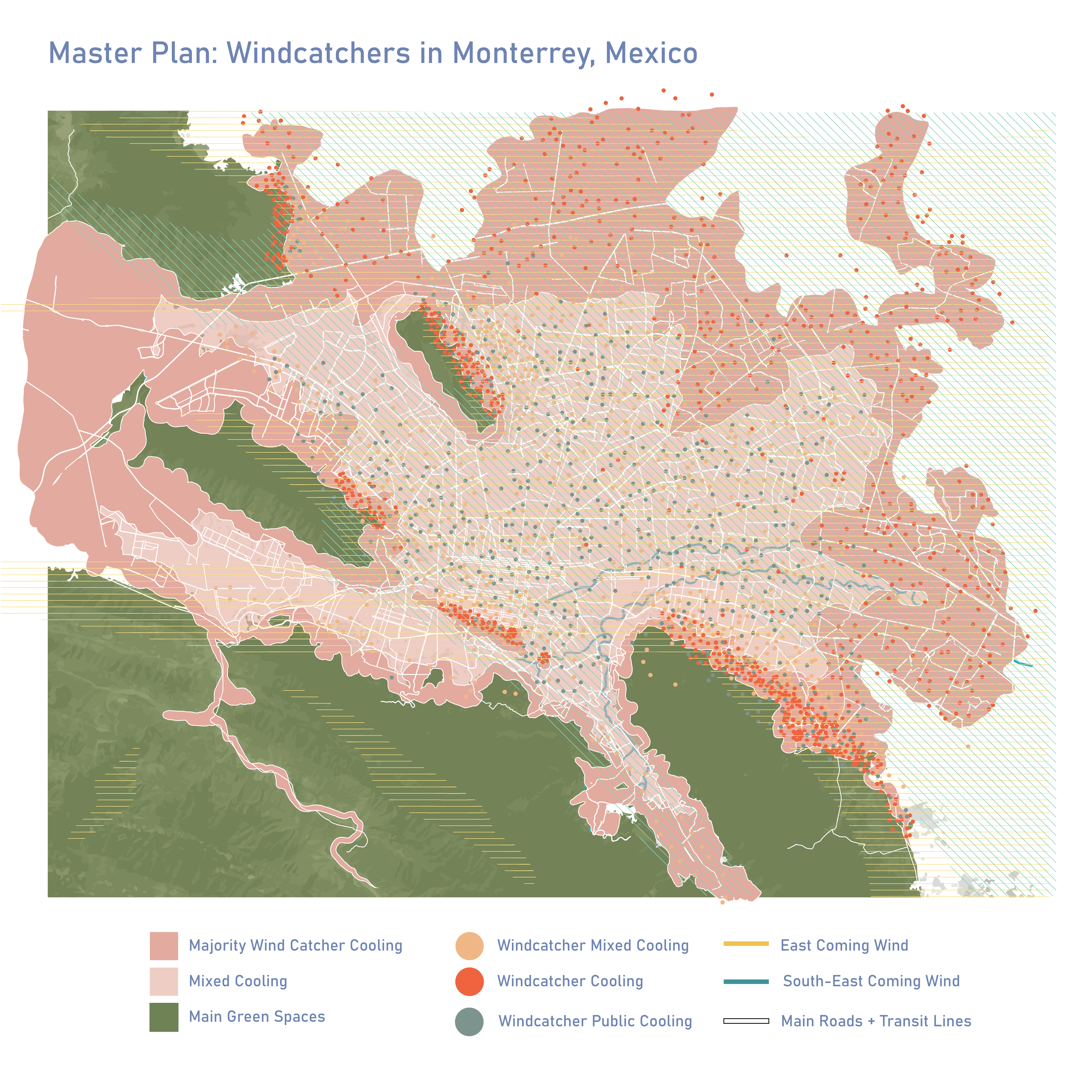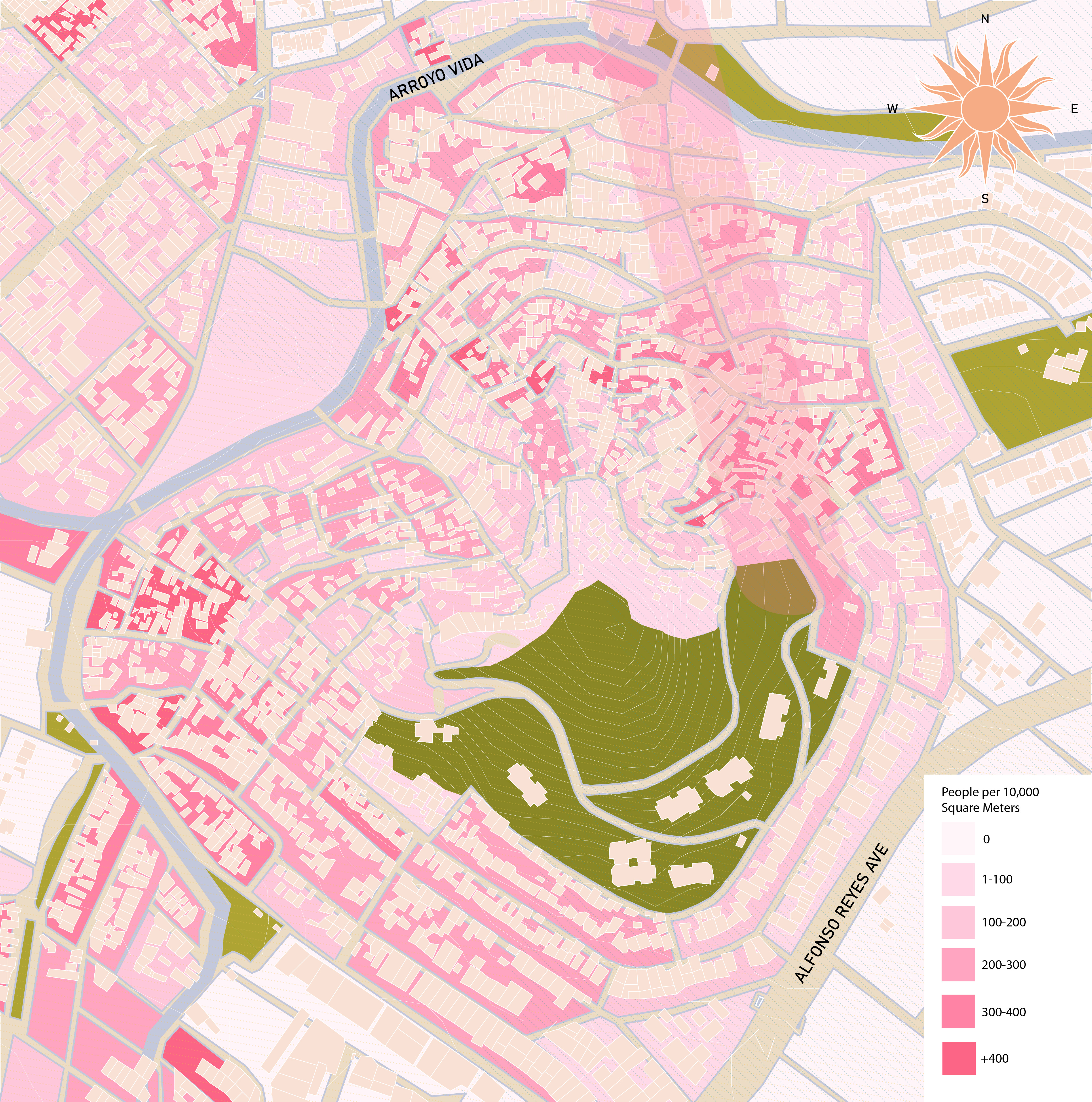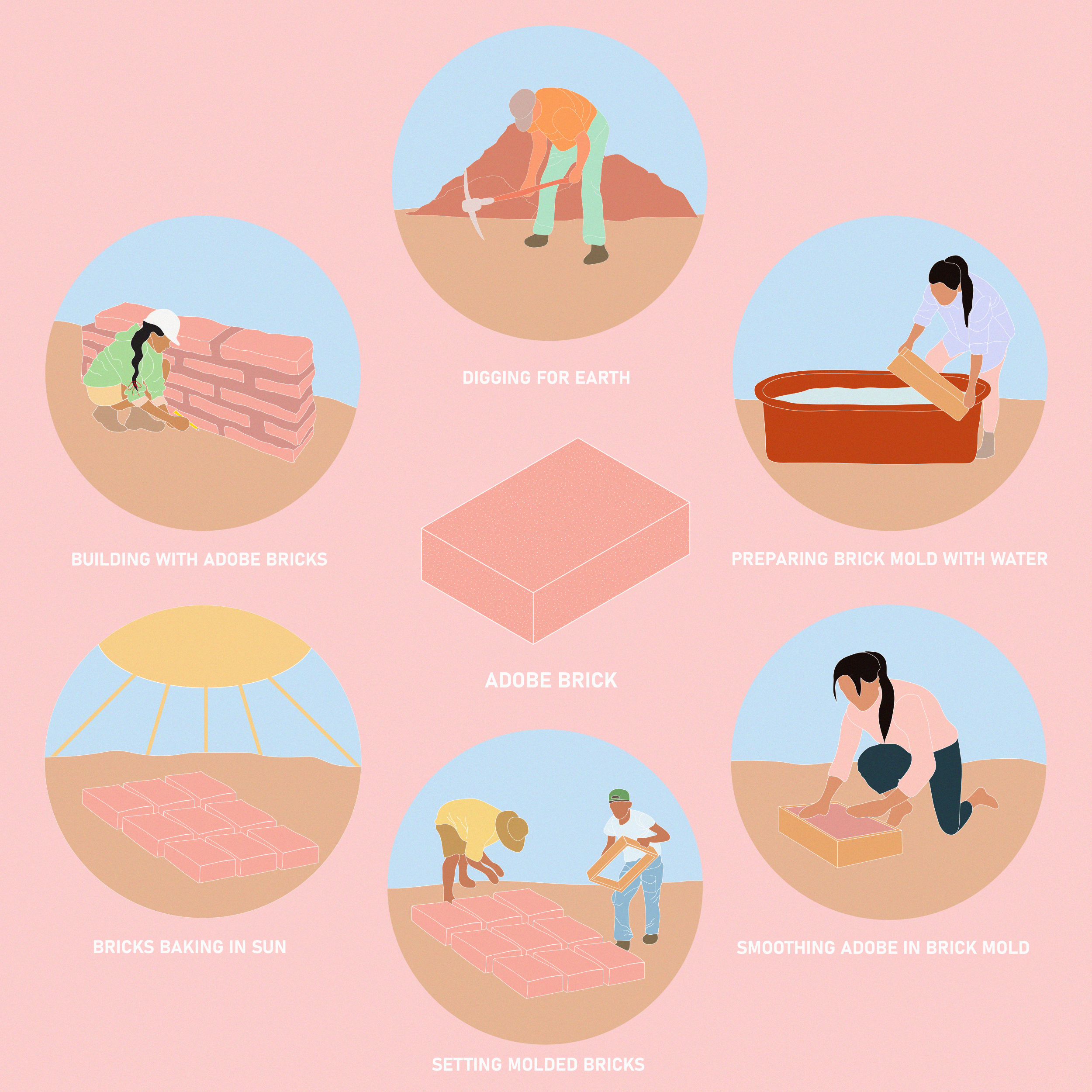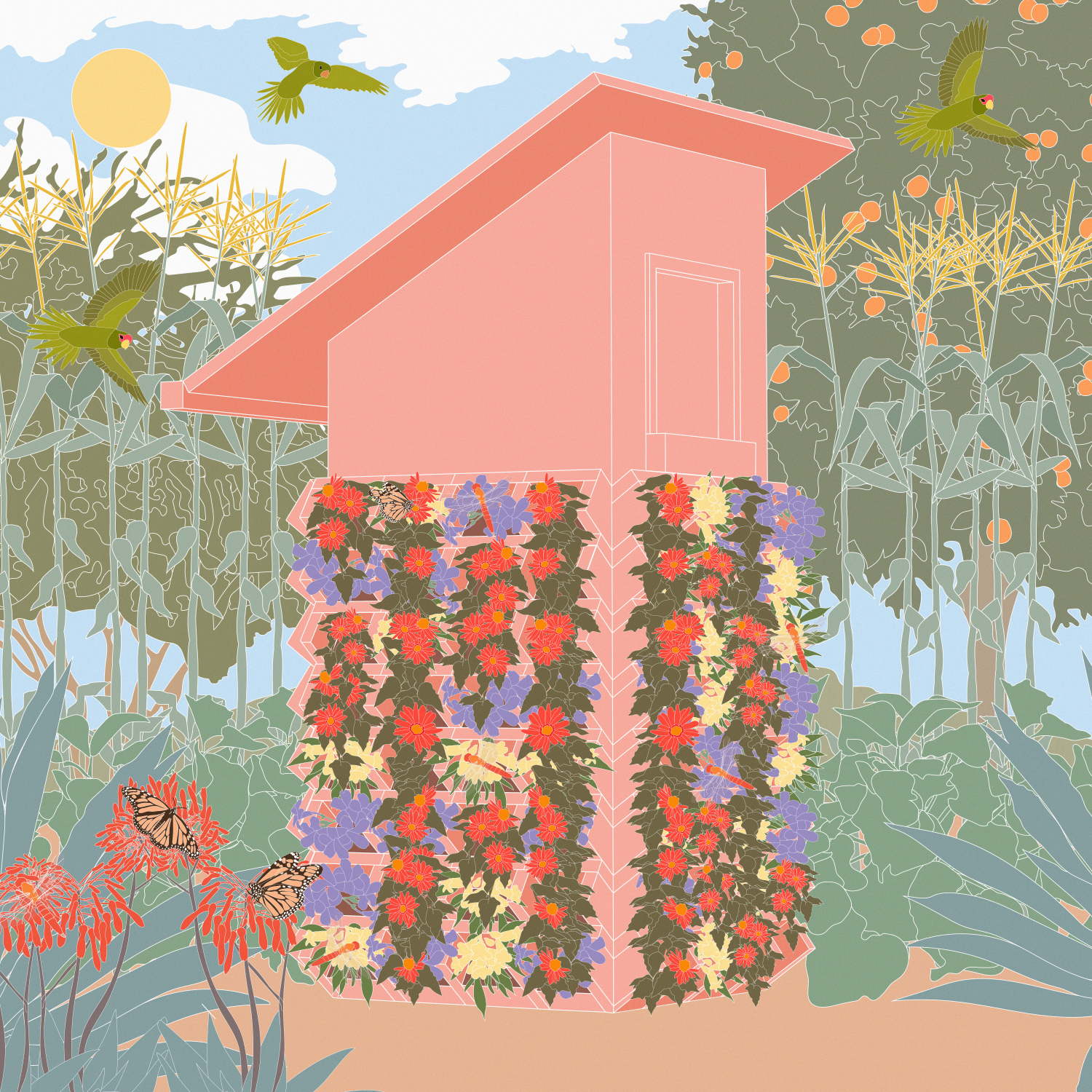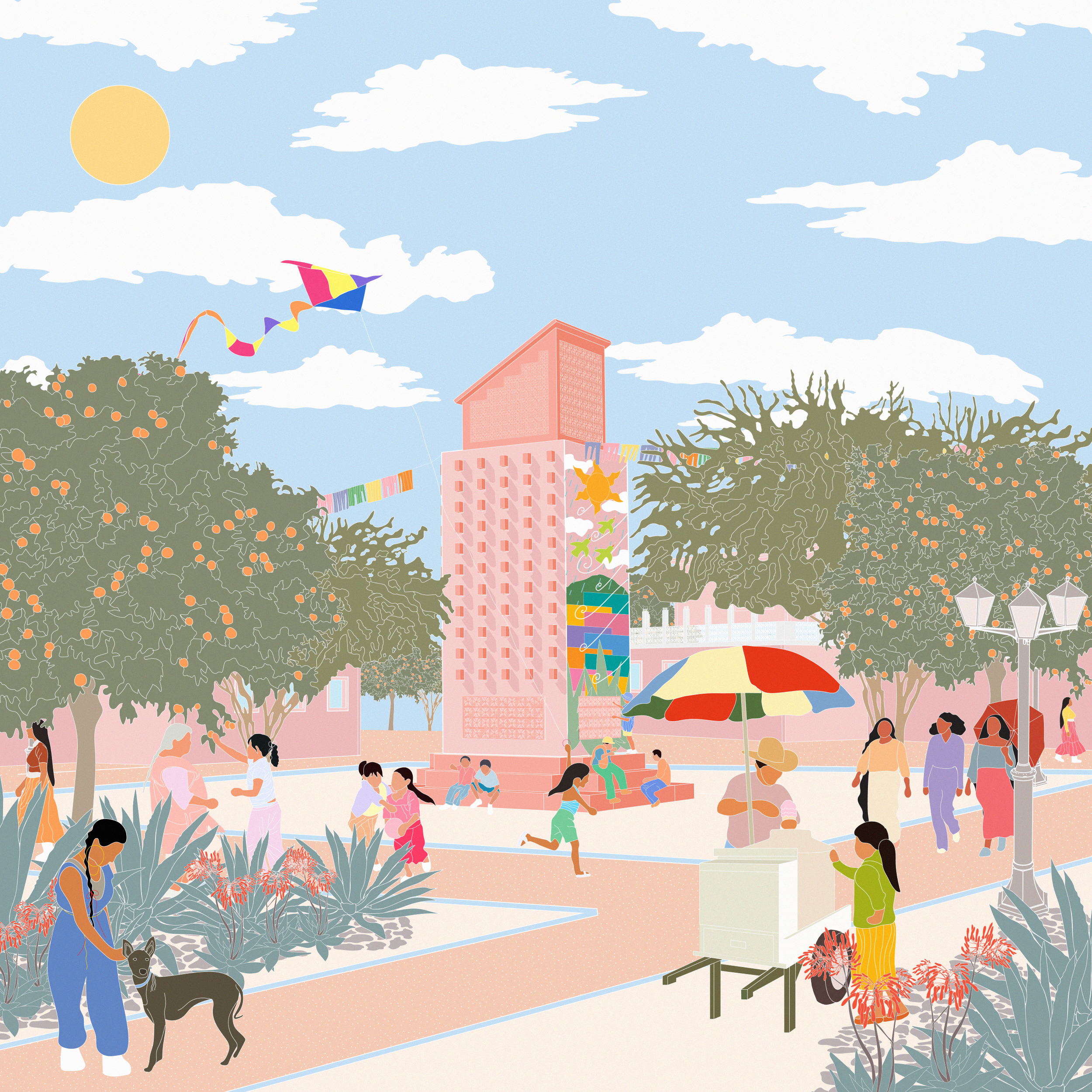Building with Nature: Wind Catcher Towers in La Campaña
I write to you as the descendant of the Tacuate people in the mountain ranges of Oaxaca, Mexico, and as a result of forced transnational migration. The original inhabitants of the colonized state of Nuevo León include the Alazapas in the northern region, the Guachichiles in the southern region, the Borarados and Tamaulipec groups in the eastern region, and the Coahuiltecans in the western region. The city of Monterrey occupies the Native land of the Alazapas, Guachichiles, Borarados, Tamaulipec, Coachuiltecan, and countless other Indigenous populations that have been forcibly displaced from their traditional lands during Spanish colonization. We must acknowledge that the project we are pursuing is in solidarity with the Indigenous peoples who continue to protect and preserve the land in which we reside.
![]()
Monterrey, Mexico, is wedged between the Sierra Madre Oriental, Cerro de la Silla, and the Cerro de las Mitras mountain ranges and is home to a population of 1,142,994 people and over 1,500 plant species. In recent years, extreme seasonal conditions have become more frequent as infrastructure, political, and social systems struggle to combat drastic temperatures, weather, public health, and cultural shifts. Extreme seasonal conditions such as increased temperatures, extensive droughts, and excessive flooding continue to put inhabitants at risk and add pressure to their way of living. In 2023, there was an excessively long drought that caused 116 people to die from heat-related deaths. With growing death tolls and increased water scarcity, addressing the conditions of climate change has never been so imperative.
![]()
Our collective goal is to acknowledge the possibilities of coexistence with natural building materials that foster mutual flourishing between human and non-human ecologies. Regenerating a world built on an economy of exchange rather than extraction, as climate crisis conditions demand we do. We are especially interested in working with regenerative earth-building materials that traditionally stem from indigenous and native communities around the world. Specifically focusing on collaboration with earth-building materials such as adobe to support a mutually productive relationship between all inhabitants of the region. We are interested in emphasizing the regenerative and resilient nature of the adobe brick and generating outcomes that recognize the physical and spiritual elements of co-existence. We want to reinforce teaching from traditional knowledge systems to build toward a more sustainable and just future.
![]()
Our implementation strategy stems from the traditional knowledge of wind catcher designs and the passive energy that can be harnessed through an earth-built tower. We began by focusing on passive wind energy as a form of regenerative cooling to be implemented in private dwellings, open-air public spaces, and ecological structures. We soon discovered the regenerative material of adobe could act as a filter to absorb CO2 emissions as well as filter other pollutants from the air, like sickness. These material qualities coincide with the change in temperature and seasonal patterns as natural passive energy systems work in parallel to one another. In other words, if seasons shift throughout the year, so does one’s ability to harness passive energy. We must consider the larger natural systems that work collaboratively throughout seasonal shifts.
![]()
Continuing our research revealed the abundance of knowledge of adobe as it inherently functions with ecosystems to filter, preserve, and carry nutrients to other beings. Adobe is an excellent regenerative material that can be found around the world and harnessed right in our backyards. The filtration process can be applied to air quality as well as water, depending on the variation of clay production. In other words, we must consider the needs and conditions of earth materials concerning the needs of the communities we are implementing our design strategy.
